Best of 2012: The Year in Review
As always, I close the book on 2012 with my year in review, a close examination of the trends in movies and moviegoing that either emerged or changed during the course of the year.
This year was an exciting one for movies. Although some ugly films were released and even uglier trends persisted, there was such a high number of films that I awarded 4 or 4.5 stars. Last year that was not the case. Also, it was a healthy mix of both smaller offerings and huge blockbusters that satisfied, not one or the other. There were only a few films that I would consider letdowns based on expectations.
Below you’ll find a few statements that I believe define 2012 at the movies. Let me know what you think.
2012 was the year of the event film, which has become the pinnacle of blockbuster filmmaking.
It’s not enough to make a blockbuster anymore, as proved by 2012. You can’t just throw $200-plus million at a project and expect audiences to turn out — just ask Disney about “John Carter” and Universal about “Battleship.” Your film has to be bigger than anything before it, something that if audiences don’t see in theaters they’ll rip their hair out.
They don’t call it the big screen for nothing, and considering the growing percentage of the digital market and the ceaseless threat of piracy, major motion-picture producing has become a game of figuring out how to get your butt in the seats, and not just in the seats, but in front of an IMAX screen with your 3D glasses on, happy that you paid $15-25 a ticket.
Consequently, studio heads have even more pressure to find the next big property or adaptation than ever before (and there already was a lot of pressure) so that their film leads to a franchise that will then lead to a big finale that can be broken up into two parts. The marketing for these films has also shifted toward selling “the end” and “the epic conclusion” with imagery suggesting the stakes are bigger than ever.
“Harry Potter and the Deathly Hallows – Part 2” in 2011 gave us a taste of exactly what we’d be getting this year with “The Dark Knight Rises” and “The Twilight Saga: Breaking Dawn – Part 2.” Similarly, though it wasn’t an ending, “The Avengers” was the culmination of about a half-dozen films over the course of four years, all of which teased the assembly of Earth’s Mightiest Heroes. It should surprise no one that the domestic box office record-holders for biggest opening weekend in order are “The Avengers” (an unfathomable $207.4 million), “Deathly Hallows – Part 2” and “The Dark Knight Rises.” Interestingly, the one film not to especially emphasize its big conclusion in the marketing was “Breaking Dawn – Part 2,” though it still holds the eighth biggest opening all time.
When you look at the 10 highest-grossing films in the world of all time, six were either definitive last films in their franchise or the third or fourth film/most recent film in the series. “The Avengers” could be counted as the seventh, though you could make a case that “culmination films” are different and could begin their own trend among blockbusters. Either way, it’s pretty simple: your best odds of making a film that grosses over a billion dollars involves building a major franchise so that you can end it in dramatic fashion.
But that’s obvious, really. What’s really interesting is how event films have changed which films studios are producing and even more so, how they market them. All you have to do is look at the big films being advertised for 2013. The trailer for “Iron Man 3” shows Tony Stark’s suits being blown up and his mansion pummeled into the sea, ending with him dragging his armor through the snow. Superman’s return to the big screen in “Man of Steel” shows him in a poster walking away in handcuffs, while “Star Trek Into Darkness” plays up its villain talking of revenge and doing anything for one’s family. And it seems as though half of major films in the last two years involve the devastation of planet Earth — the ultimate end.
Marketers want you to feel like everything you know about a franchise and the characters you love could change in an instant in one film. We didn’t see Bond on screen for four years, but everyone saw the trailer where he got shot and appeared to fall to his death, and “Skyfall” has obliterated all previous Bond box office records. Having waited so long, it was much more of an event than if the last film had come out just a couple years before.
And all this works. As a viewer trying to figure out which movies are worth seeing in theaters, you want to see the ones that will definitely be can’t-miss blockbusters. You’re more likely to skip the $200-million film that no one’s talking about so that you can be there at midnight when the film everyone’s been waiting for is finally let out of the canister.
I have always believed that in this economy people will still want to see movies, but they’re going to be a lot pickier about what they spend $10-11 a ticket on (or more for 3D and IMAX). You want to know (or at least believe resolutely) that what you’re paying for is going to be absolutely worth it, and what’s worth it is the next or final chapter in that franchise you love. Social media has perpetuated this in that you want to be the first person to Tweet about how great it was, or upload a picture of you and your friends dressed up at midnight.
As such, the big movies have gotten bigger. “Skyfall” and “The Hobbit: An Unexpected Journey” were long-awaited returns to familiar franchise territory, opening to more than $80 million each, good for fifth and sixth place among all 2012 openings. The difference between those films and number four on that list (“Breaking Dawn – Part 2”), however? Nearly $60 million. That’s a huge gap between those and the culminating/concluding event films above it in “Breaking Dawn,” “The Dark Knight Rises” and “Avengers.”
You might be asking about “The Hunger Games.” Well, the first film can be just as big an event. The books were huge bestsellers and so when it finally hit the screen it was the long-awaited chance to see what was in your head for so long.
I could go on, but Warner Bros.’ movement for “Justice League” along with “The Avengers 2” and “Hunger Games: Mockingjay” being split into two films is proof enough that this is where blockbuster filmmaking is going.
With bigger films comes a need for bigger action stars. Audiences want their heroes more than ever.
I’m not talking about superhero films, as that’s been going on forever. I’m talking about the action hero, the guy (Sorry ladies, nothing I can do, but props to Katniss Everdeen.) to lead your big blockbuster. Seeing as movies are getting bigger than ever, their main characters need to be capable of shouldering more than they ever have before. Marvel Studios has done an incredible job picking charismatic leading men out of obscurity such as Chris Hemsworth and to a lesser extent Chris Evans. There’s a reason those two and Robert Downey Jr. have been some of the most sought-after blockbuster leading men on the planet, and though he hasn’t played a comic character, a reason that you still see Johnny Depp in every other big movie coming out.
How else do you explain “Skyfall” doing better than any other Bond movie? Daniel Craig has proven himself as not just a great Bond, but a great action star. Yes, it helped that since he came on the film’s have gotten much darker and more intelligent, committing to great storytelling, but that’s not enough to explain a gross of a billion dollars worldwide in two months.
Audiences are definitely pining for their action heroes of old too. Tom Cruise couldn’t churn out a huge hit prior to 2011 if he jumped on five more couches and screamed about it. His return as Ethan Hunt last winter led to studio confidence in this year’s “Jack Reacher” and landed Cruise starring gigs in some major upcoming sci-fi flicks. Will Smith finally appeared on screen again for “Men in Black III” for the first time since “Seven Pounds.” No one in America cared about seeing a third “MIB,” but the film was one of the 10 biggest of the year internationally.
“The Expendables 2” didn’t crush it this year, but look at how many gigs Arnold Schwarzenegger has gotten since he announced his return to acting? It wouldn’t surprise me if “The Last Stand” or one of his other upcoming films did better than expected.
More than the big action stars, studios are realizing that casting pretty boy action heroes isn’t cutting it. Just ask poor Taylor Kitsch, who had a worse 2012 than anyone on the planet. Critics mostly ripped “Savages” and those two box-office failures I mentioned earlier in “John Carter” and “Battleship” both had him on the poster.
Similar to Kitsch is Sam Worthington, who James Cameron thrust into action hero status in “Avatar” back in 2009. That movie helped him score another hit in “Clash of the Titans” four months later, but in “Man on a Ledge” and “Wrath of the Titans” this year, he faltered. “Wrath” made half of what “Clash” did in North America and “Ledge” opened with just $8 million in January. Compare that with Mark Wahlberg’s January film “Contraband,” which had an even more generic premise and opened to $24.3 million. Seeing that, Michael Bay was likely happy to oblige when fans clamored for Wahlberg to star in “Transformers 4.”
Next year, it will be interesting to see what happens with Channing Tatum. He won over men in “21 Jump Street” and ladies in “Magic Mike” and “The Vow,” none of which were of course action films, but all of which grossed more than $100 million. This year, he appears in “G.I. Joe: Retaliation” and “White House Down,” which will test his action meddle in the wake of his newly cemented star status. It’s even believed “G.I. Joe” was reworked to include him more in the film and marketing when Paramount yanked it from the summer slate this year. If that’s so, Hollywood is starting to figure out big projects need A-listers attached more than ever, that face to give audiences the extra bit of confidence to know this is a film not to be missed.
2012 was the coming out party for the franchise reboot, and gave studios a sense of how audiences will react to these films.
One of the more contentious blockbusters of the year in terms of audience opinion was “The Amazing Spider-Man.” After plans fell through years ago for Sam Raimi to make “Spider-Man 4,” Sony endeavored to go in a new direction, which involved recasting Peter Parker and retelling how he became Spider-Man. Few will argue with the talents of Andrew Garfield and Emma Stone among the others cast in this film, but many people (myself not included, however) felt we didn’t need to see Spider-Man’s origin story on screen just 10 years after Raimi did the same.
Audiences on the whole showed up to be sure, making “Spider-Man” the sixth biggest film of 2012 to date (though it will be surpassed by “The Hobbit: An Unexpected Journey”), but compared to Raimi’s trilogy, the film drastically underperformed, suggesting that reboots don’t build off the momentum of previous franchise in terms of box office. Well, at least that’s true domestically. The film made $262 million in North America, about $70 million less than the lowest-grossing “Spider-Man” film (“Spider-Man 3”), but overseas it earned $490.1 million, good for the second biggest of all four “Spidey” films in foreign totals. As I mentioned last year, foreign box office has been dictating blockbusters, and these audience have an unadulterated love for familiar characters such as Spider-Man and lack the skepticism of North America theater-goers.
The other big reboot of 2012 was Jeremy Renner’s takeover of the “Bourne” franchise, “The Bourne Legacy.” Like “Spider-Man,” the film grossed less than any previous entry domestically with $113.2 million and opened just better that the first film, “The Bourne Identity.” It also wasn’t enjoyed by audiences as much as the original trilogy. Interestingly, “Legacy” is the only Bourne film to make more money overseas than in North America, but it only made $162.9 million abroad. Audiences were much more skeptical of a Bourne film without Matt Damon.
If you look at 2012, there were almost as many films that could be considered “reboots” or “distant sequels/spin-offs” such as “Spider-Man” and “Bourne” as there were direct sequels (“The Dark Knight Rises,” “Taken 2,” “Ice Age: Continental Drift”). “Prometheus,” for example, was another film in a model we hadn’t seen before, a film with “Alien DNA” that many consider a prequel. Audiences demonstrated a healthy curiosity for these films rather than blind faith, which suggests studios can lean on older brands, but should be a bit more careful about budget allowance.
In general, however, what we know about foreign totals ruling the box office comes into play here too. International audiences were much more eager to see “Skyfall” (70.8 percent of its total from foreign box office), “The Hobbit” (66.1 percent of current total from foreign box office), “Spider-Man” (65.2 percent) and “Men in Black III” (71.3 percent). Worth noting is of the top 12 films domestically this year, those are four of the five highest percentages of total gross from foreign box office, the fifth being “Madagascar 3: Europe’s Most Wanted,” which has Europe in the damn title. The average percentage of foreign gross of the top 10 films in North America was 60.7 percent this year.
Numbers aside, I counted nine films that I considered reboots, spinoffs or distant sequels in 2012, compared to four in 2011. Obviously that’s a matter of opinion, but the number is definitely growing, and Hollywood definitely has a mold to follow based on this year.
Audiences are more in tune with independent films than ever before.
I wanted to make this point after all the blockbuster talk to show how audiences in North America are starting to get smarter. More on that in a second.
The reason I can make this claim is simple: limited New York/L.A. openings of independent films this year posted the highest per theater averages of any films that weren’t Disney or Disney/Pixar endeavors (those films used to open limited in major markets before hitting the masses). You can’t exactly count “Red State,” Kevin Smith’s film that he distributed unconventionally/almost not at all.
The two major films I’m talking about are “The Master” and “Moonrise Kingdom,” which boast the 9th and 11th biggest opening per theater averages of all time, respectively. “The Master” made $147,262 per theater in five theaters and “Moonrise” averaged $130,749 in four theaters. To put that in perspective, imagine any movie you’ve seen recently and knowing that that movie at that theater alone made that much money in a weekend. “Lincoln” and “Zero Dark Thirty” also made the top 30 all time.
What those films all have in common are reputable filmmakers. Just as I said about blockbusters, audiences are looking for something reliable more than they ever have, and a proven director offers just that. Need more proof? Woody Allen’s “Midnight in Paris” and Terrence Malick’s “The Tree of Life” of last year both exist in the top 30 in this category (though lower than this year’s films). Paul Thomas Anderson, Wes Anderson, Steven Spielberg and Kathryn Bigelow are all acclaimed filmmaking vets with distinctive styles. Just as mainstream audiences want to see the next film in their favorite franchise, indie lovers want to see what’s next from their favorite directors. Although not an indie, Quentin Tarantino’s “Django Unchained” is seeing similar success for this reason.
Ok, maybe it’s more about something dependable than it is audiences getting smarter, but it means audiences are more wary of the films they should be, films without dependable directors or stars that have no previous track record of any kind. We’re not shut out to anything new, but we’re looking for calculated risks. Seeing Thor and Bella star in “Snow White and the Huntsman” was a calculated risk, for example.
In some cases, that means seeking out independent films. Through Netflix, iTunes, Amazon and the Internet in general, indies are more accessible than ever, and audiences aren’t afraid to see something considered more intellectual if it lessens the risk of a bad film experience in which money is wasted.
If the economy ever manages to recover in the U.S., it will be interesting to see how that changes moviegoing — if audiences will revert to reckless spending on unreliable studio-manufactured crap, or continue to seek out the most dependable, premium, moviegoing experiences. We’ll just have to see.
Thanks 2012, it’s been fun.



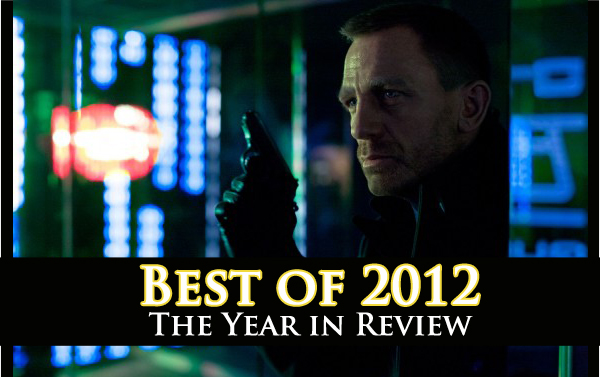

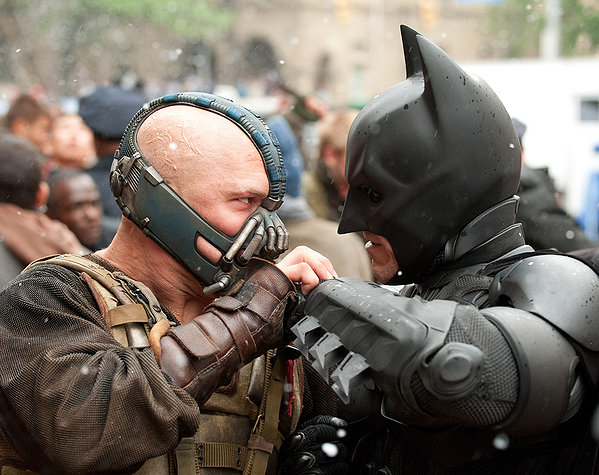
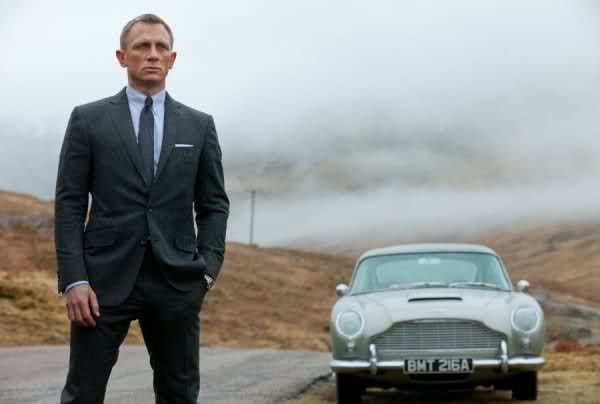
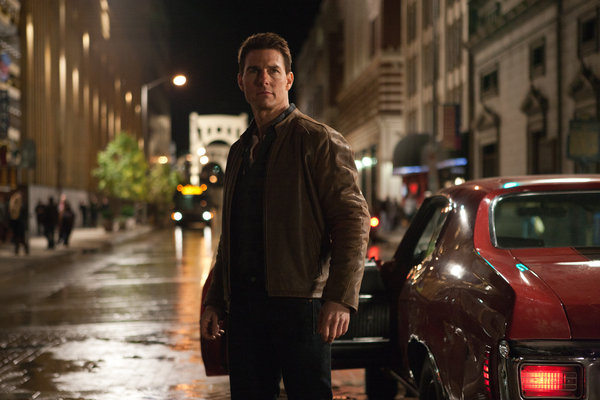
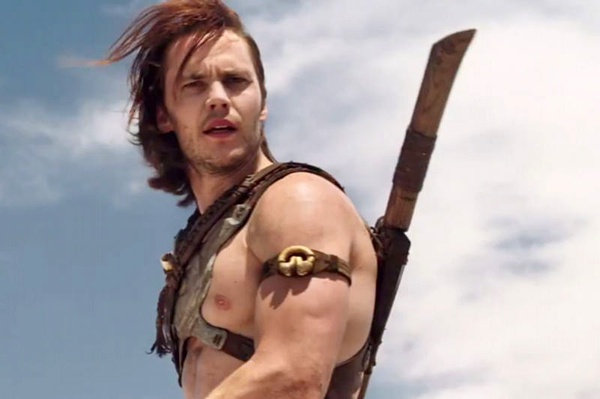
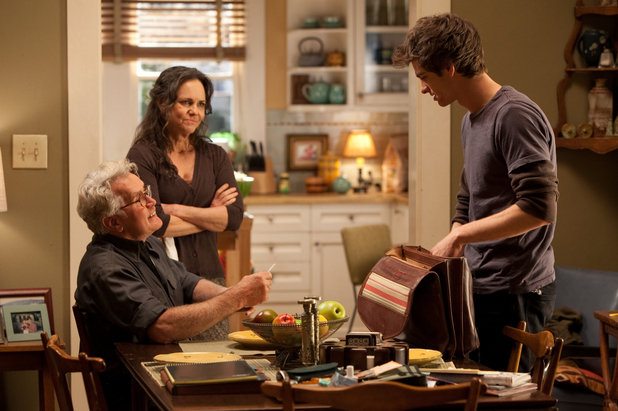
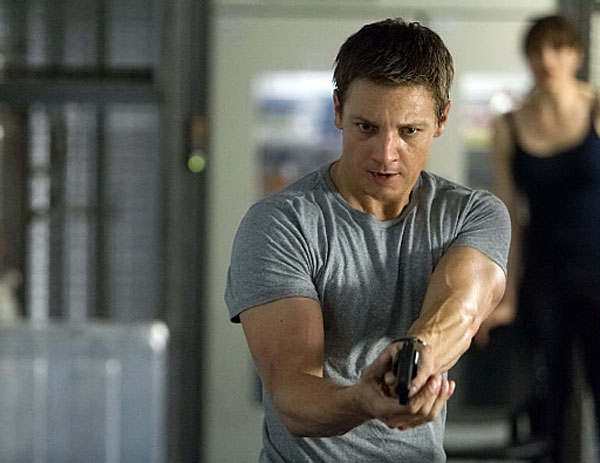
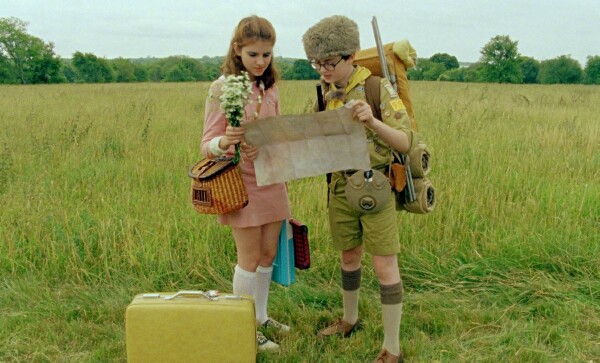
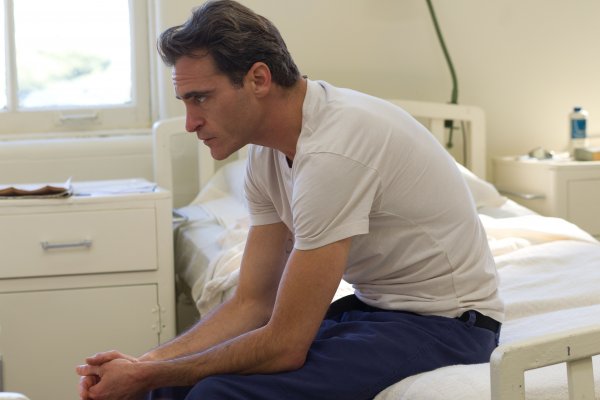

0 Comments
You can be the first one to leave a comment.